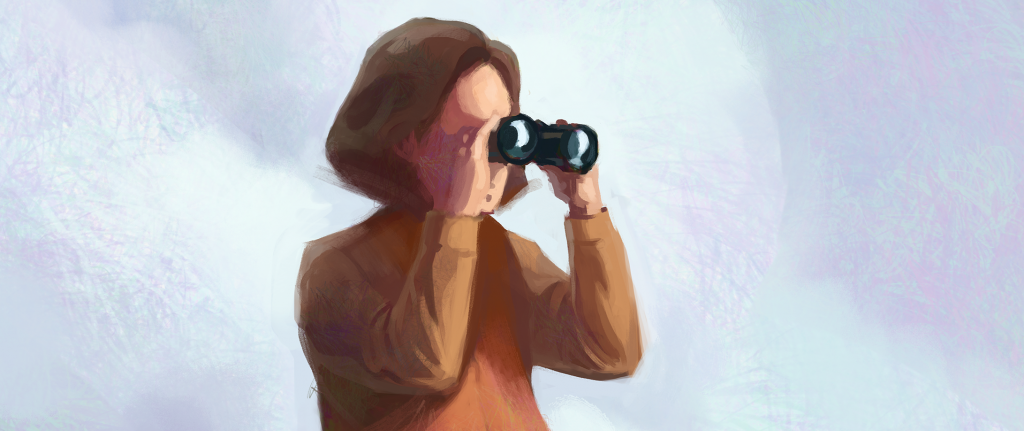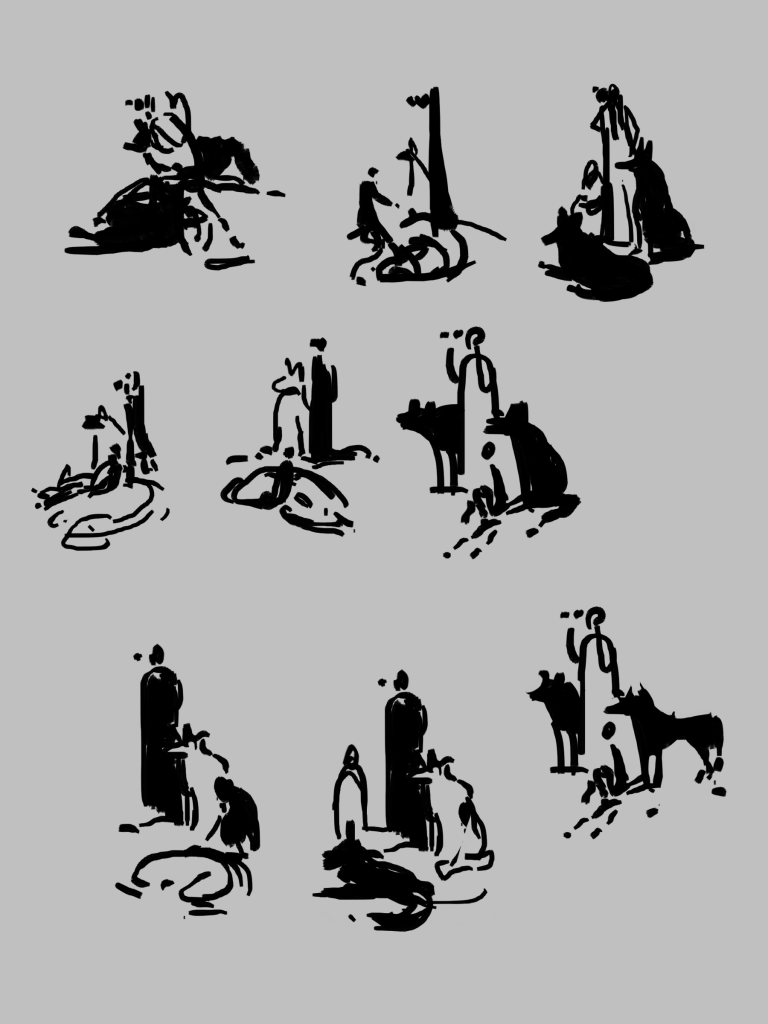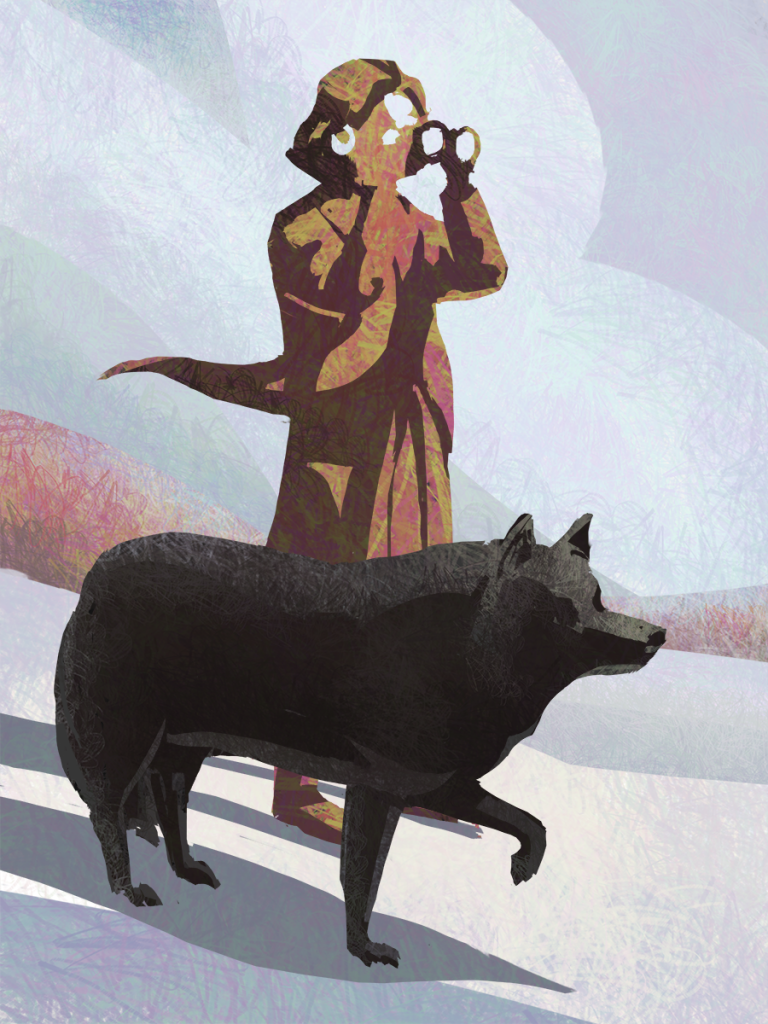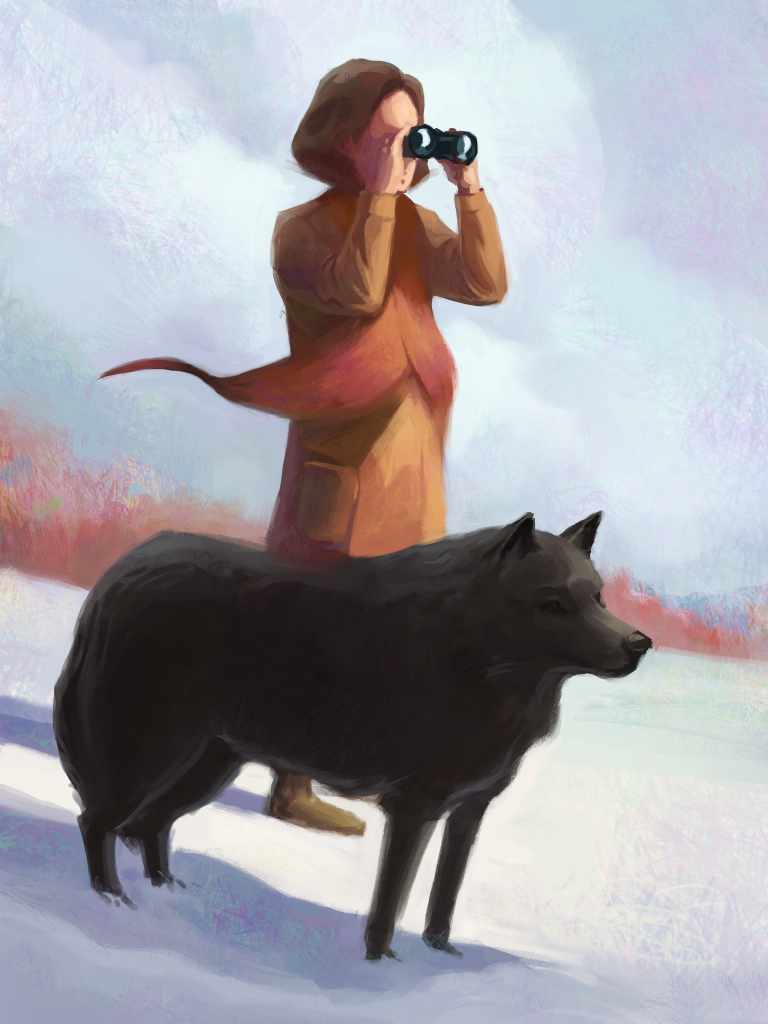
It’s funny how the more you learn, the more you realize that you don’t know as much as you thought you did. I feel that way a lot when it comes to digital painting and it’s why I enjoy reviewing fundamentals so much. There’s always some overlooked piece of knowledge that reveals itself in time if you go back to look for it. To find more nuggets of wisdom, I spent the past month focusing on digital painting techniques and process. Luckily, after my review, I have found some nuggets that can be applied to your creative process.
Ask yourself what your creation is about. If you distill your image down into the most essential shapes, what would it look like? Can those shapes be further simplified or reorganized to make a stronger statement? By answering these questions upfront using thumbnails, it will prevent frustration later on. I’ve told myself many times that my “quick rough sketch” (aka scribble) was good enough direction. Of course later on, I would find that I had only painted myself into a corner. Another method you can use to keep your images focused is by working small. If you make your workspace window smaller and zoom out, you force yourself to focus on the main shapes. Later on, you can zoom in to refine the parts that matter, but never forget what’s most important.
What’s Important?

Do More Research
Collecting reference and doing the necessary research is another way to make stronger images. It can be so tempting to start off a piece in a blaze of inspiration without setting up proper foundations. Unfortunately, this method can lead to a lot of roadblocks later in the piece. What does lighting in this scenario look like? What is the architecture or scenery based on? How does this fabric fold? What are the materials made of? These questions are much easier to answer when you have reference images right in front of you. It takes all the guesswork out and no, it doesn’t make you less of an artist for using it.

It’s Okay To Go Backwards
Even after setting up proper foundations and doing research, it’s so easy to get caught up in the details. Before you know it, your core message gets lost in favor of rendering and fancy textures. If you still find yourself stuck on an image despite your best efforts, fret not. Try working backwards to find the bigger shapes, get the right value structures and color. It can be difficult to pivot after spending so much time working on a solution, but taking the time to repaint weak areas is going to make you a better artist.

Conclusion
To summarize the above: think more, do less. Start your work by setting up proper foundations first. Being more deliberate with your compositions, research and brushstrokes is going to save you time in the long run. Trust me, I’ve tried taking shortcuts and skipping steps in the creative process. It rarely works out. It’s best to leave the shortcuts to the keyboards.


Hi. It’s great to see you. Thanks for your nice site